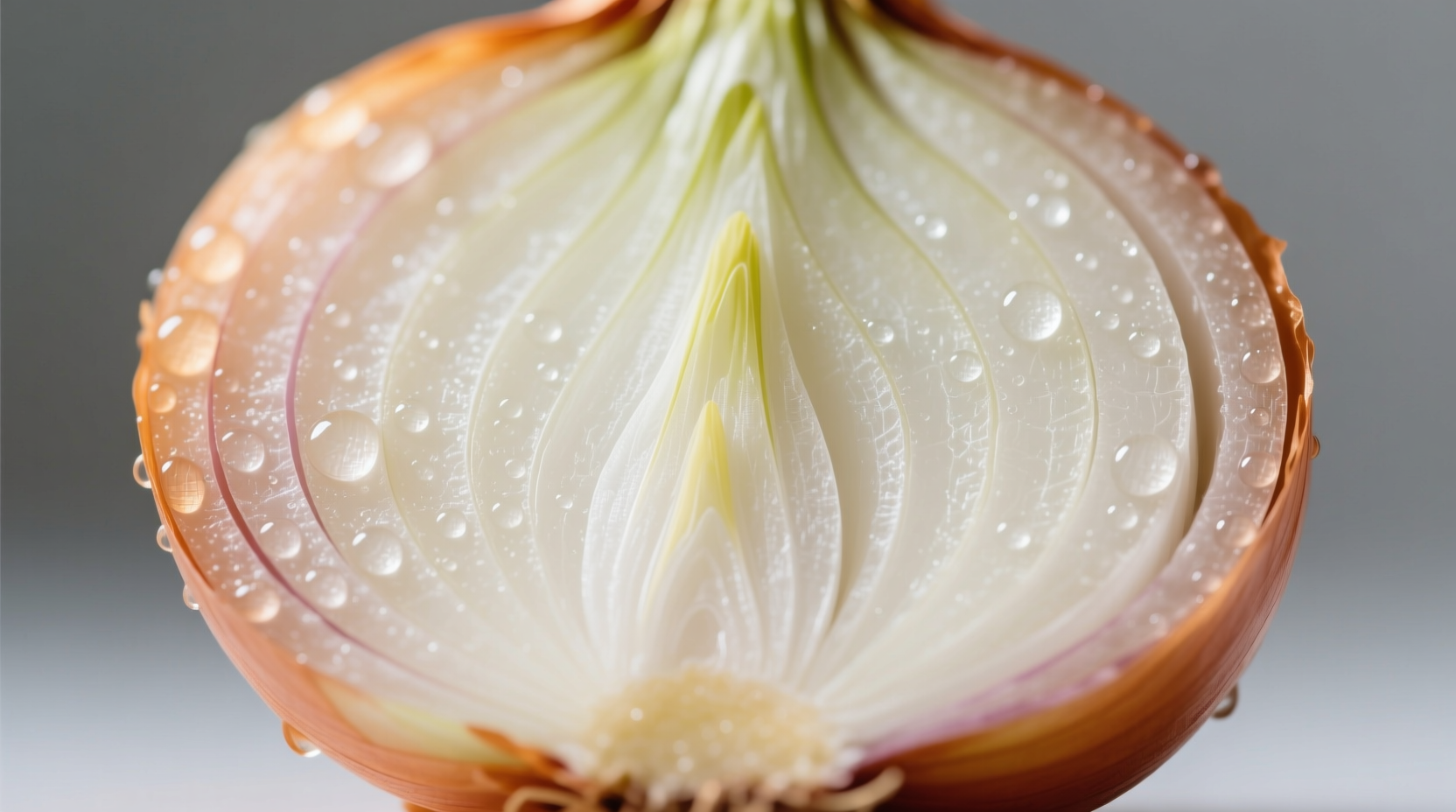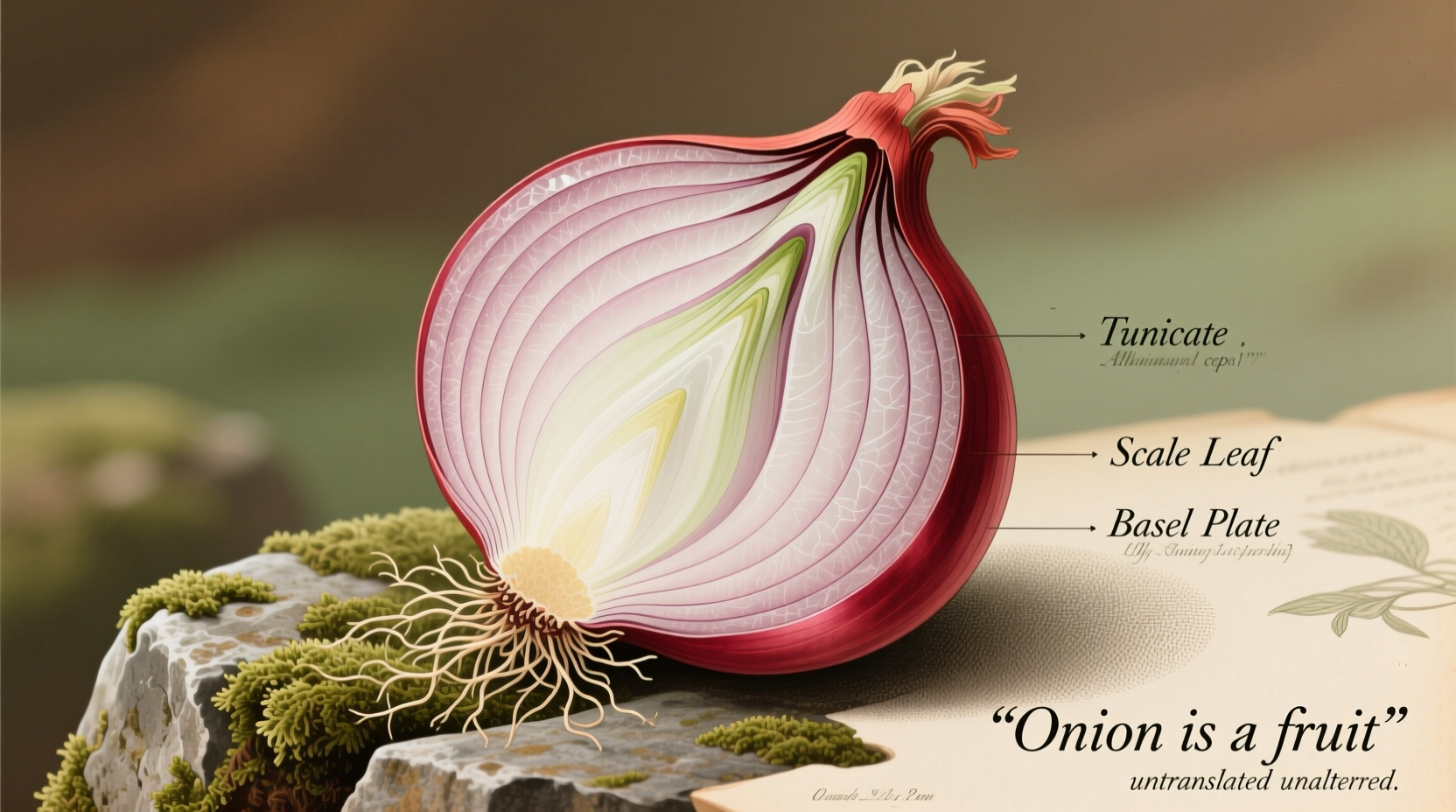When you're chopping onions for dinner and wonder "Is an onion a fruit?", you're not alone. This question reveals a widespread confusion between how we use food terms in the kitchen versus how botanists classify plants. Let's clear up this botanical mystery once and for all with science-based facts you can trust.
Why the Confusion Exists: Culinary vs. Botanical Language
The simple answer to "onion is a fruit" is a definitive no—but understanding why requires exploring two different classification systems. In everyday cooking language, we call many plant parts "vegetables" based on taste and culinary use. Botanists, however, classify plants based on their biological structure and reproductive function.
Botanically speaking, a fruit develops from the flower of a plant and contains seeds. Think apples, tomatoes, or cucumbers—all develop from flowers and house seeds. A vegetable isn't a scientific category at all—it's a culinary term for edible plant parts like roots, stems, and leaves.
| Classification Type | Botanical Definition | Onion's Classification |
|---|---|---|
| Fruit | Mature ovary of a flowering plant containing seeds | ❌ Does not apply (onions don't develop from flowers) |
| Vegetable (culinary) | Edible plant parts not classified as fruits | ✅ Correct category |
| Bulb | Modified underground stem for nutrient storage | ✅ Specific botanical classification |
What Exactly Is an Onion? The Botanical Breakdown
Onions (Allium cepa) belong to the Alliaceae family and are classified as bulbs—a specific type of modified stem. Unlike fruits, which develop from flowers, onion bulbs form underground as storage organs for the plant. The layers you peel back are actually modified leaves surrounding a small stem core.
According to the Royal Horticultural Society, bulbs serve as energy reserves that allow plants to survive adverse conditions. This biological function places onions firmly in the vegetable category, specifically among stem vegetables like potatoes and garlic.

Historical Context: How Food Classification Evolved
The distinction between fruits and vegetables has evolved significantly over time. Ancient Greek botanist Theophrastus (371-287 BCE) first documented plant classifications based on growth habits. The modern botanical definition of fruit was formalized in the 18th century by Carl Linnaeus, whose classification system remains foundational in biology today.
This historical development explains why culinary and scientific terminology diverged. Chefs and home cooks continued using practical terms based on taste and usage, while scientists developed precise biological categories. The 1893 US Supreme Court case Nix v. Hedden famously ruled that tomatoes are legally vegetables for tariff purposes, despite being botanically fruits—highlighting this ongoing terminology split.
Practical Implications: Why Classification Matters
Understanding whether onion is a fruit might seem academic, but it has real-world applications:
- Gardening success: Knowing onions are bulbs helps determine proper planting depth (shallow for bulbs vs. deeper for root vegetables)
- Cooking techniques: Bulb vegetables caramelize differently than fruits due to their sugar composition
- Nutrition planning: Bulbs provide different nutrients than fruits (higher in sulfur compounds, lower in natural sugars)
- Food preservation: Bulbs require different storage conditions than fruits (onions need dry, dark spaces while many fruits emit ethylene gas)
Common Food Classification Myths Busted
The "onion is a fruit" misconception is just one example of widespread confusion. Let's clarify other common mix-ups:
- Tomatoes: Botanically fruits (develop from flowers, contain seeds), culinarily treated as vegetables
- Cucumbers: Also botanical fruits despite savory culinary use
- Rhizomes vs. bulbs: Ginger is a rhizome (underground stem), while onions are true bulbs
- "Root" vegetables: Potatoes are tubers (stems), not roots—true root vegetables include carrots and beets
How to Identify Plant Classifications Yourself
Next time you wonder about a food's classification, ask these questions:
- Did this part develop from a flower? (If yes, likely a fruit)
- Does it contain seeds within its structure? (If yes, botanical fruit)
- Is it a storage organ for the plant? (If yes, likely a vegetable like a bulb, tuber, or root)
- What's its primary biological function? (Reproduction = fruit; storage/survival = vegetable)
When examining onions specifically, note that the actual flower appears only when the plant bolts (sends up a flower stalk), separate from the bulb itself. The edible part never contains seeds—it's purely a storage structure.
Practical Takeaways for Your Kitchen and Garden
Now that we've settled the "is onion a fruit" question, here's how to apply this knowledge:
- Store onions away from potatoes (which emit moisture that spoils bulbs)
- Use proper curing techniques for homegrown onions (dry stems completely before storage)
- Understand why onions behave differently in recipes than fruits (less acidity, different sugar composition)
- Recognize when recipes might substitute other bulb vegetables (shallots, garlic) successfully
Whether you're meal planning, gardening, or just curious about your food, understanding botanical classifications helps you work more effectively with ingredients. The next time someone claims "onion is a fruit," you'll know exactly why that's incorrect—and more importantly, why the distinction matters in practical terms.
Is an onion technically a fruit?
No, onions are not fruits. Botanically, fruits develop from the flower of a plant and contain seeds. Onions are modified underground stems called bulbs, classified as vegetables in both culinary and botanical contexts.
Why do some people think onions are fruits?
This confusion typically comes from misunderstanding botanical terminology. Some mistakenly believe any plant that doesn't taste sweet must be a vegetable, or confuse the onion's layered structure with fruit anatomy. The key distinction is that fruits develop from flowers and contain seeds, which onions do not.
What's the difference between culinary and botanical classification?
Culinary classification is based on taste and cooking use (sweet = fruit, savory = vegetable), while botanical classification follows scientific plant structure. Botanically, a fruit must develop from a flower and contain seeds. This is why tomatoes and cucumbers are botanical fruits but culinary vegetables.
Are there any vegetables that are actually fruits?
Yes, several foods we treat as vegetables are botanically fruits because they develop from flowers and contain seeds. These include tomatoes, cucumbers, zucchini, eggplants, and peppers. The distinction matters for gardening (fruiting plants have different care needs) and understanding plant biology.
How should I store onions properly?
As bulb vegetables, onions require cool, dark, dry storage with good air circulation. Never store them near potatoes (which emit moisture) or in plastic bags (which trap humidity). Properly cured onions can last 2-3 months in mesh bags or baskets at room temperature, away from direct light.











 浙公网安备
33010002000092号
浙公网安备
33010002000092号 浙B2-20120091-4
浙B2-20120091-4